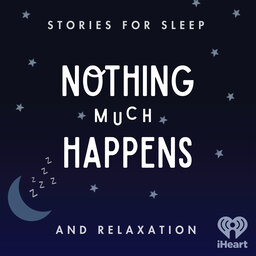In the Map Room (Encore)
Originally Aired: July 12th, 2020 (Season 6 Episode 1)
Our story tonight is called In the Map Room, and it’s a story about the pleasures of looking at the world drawn out on paper. It’s also about a gasp of koi fish in a pond, a bike ride that leads somewhere surprising, and the view from the upper room of an old house.
So get cozy and ready to sleep.
Subscribe for ad-free, bonus, and extra-long episodes now, as well as ad-free and early episodes of Stories from the Village of Nothing Much! Search for the NMH Premium channel on Apple podcasts or follow the link below: nothingmuchhappens.com/premium-subscription.
Listen to our new show, Stories from the Village of Nothing Much, on your favorite podcast app.
Join us tomorrow morning for a meditation at firstthispodcast.com.
 Nothing much happens: bedtime stories to help you sleep
Nothing much happens: bedtime stories to help you sleep


